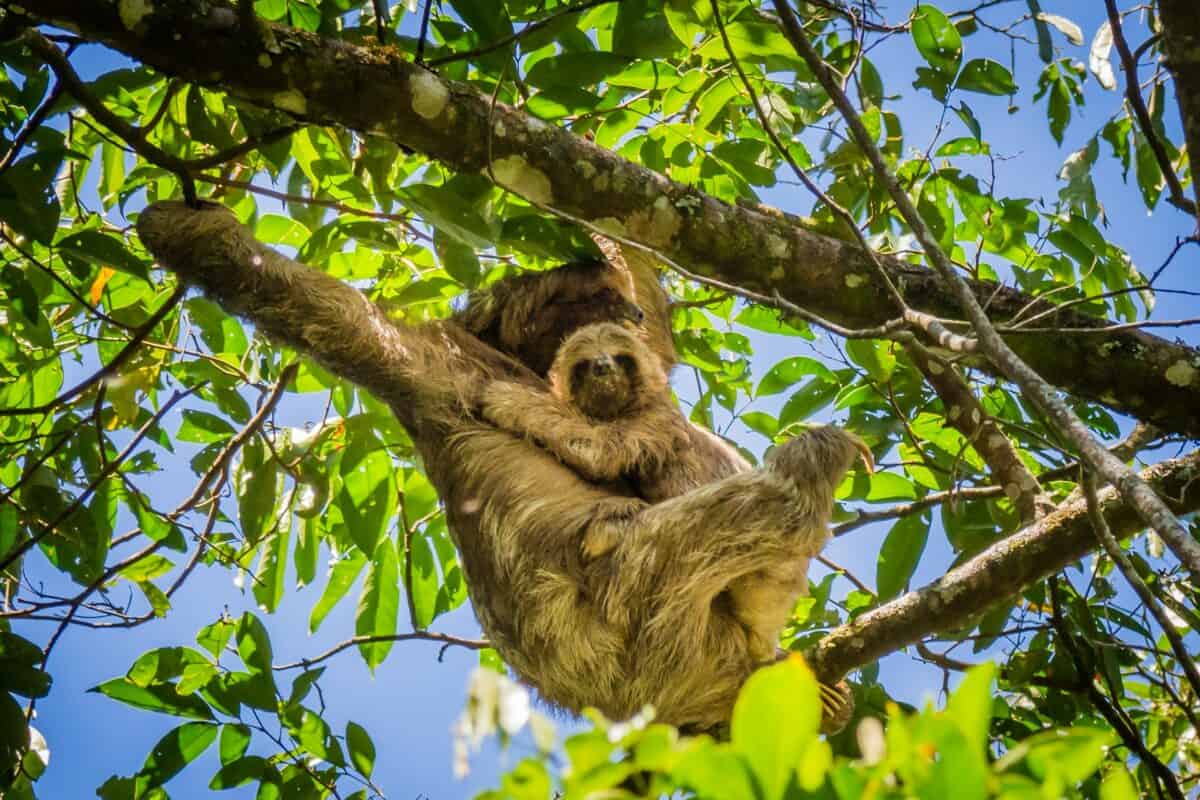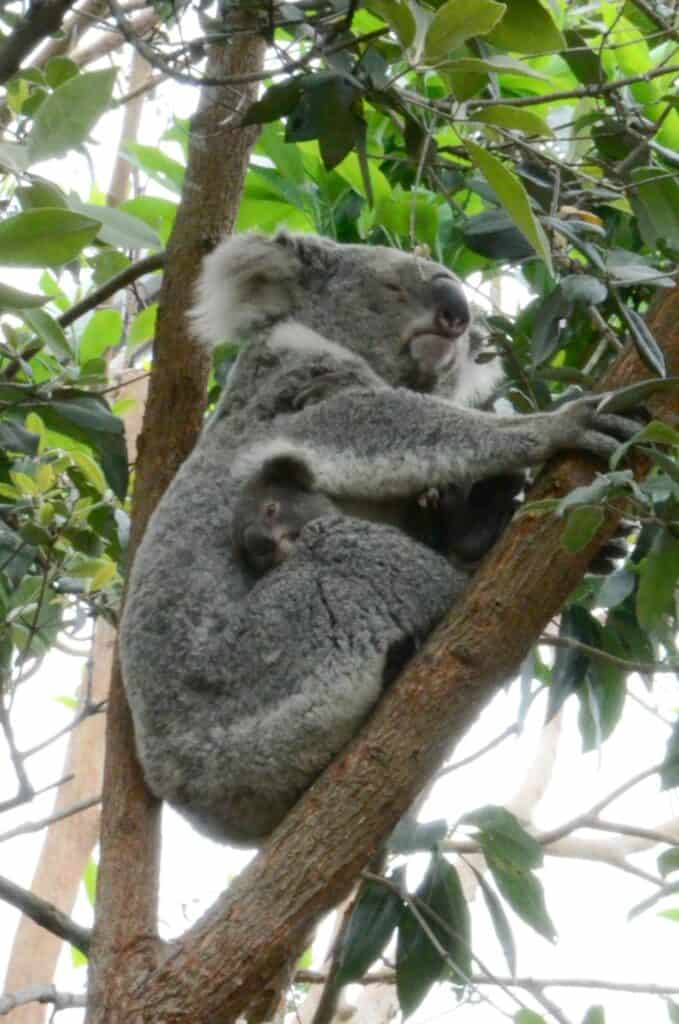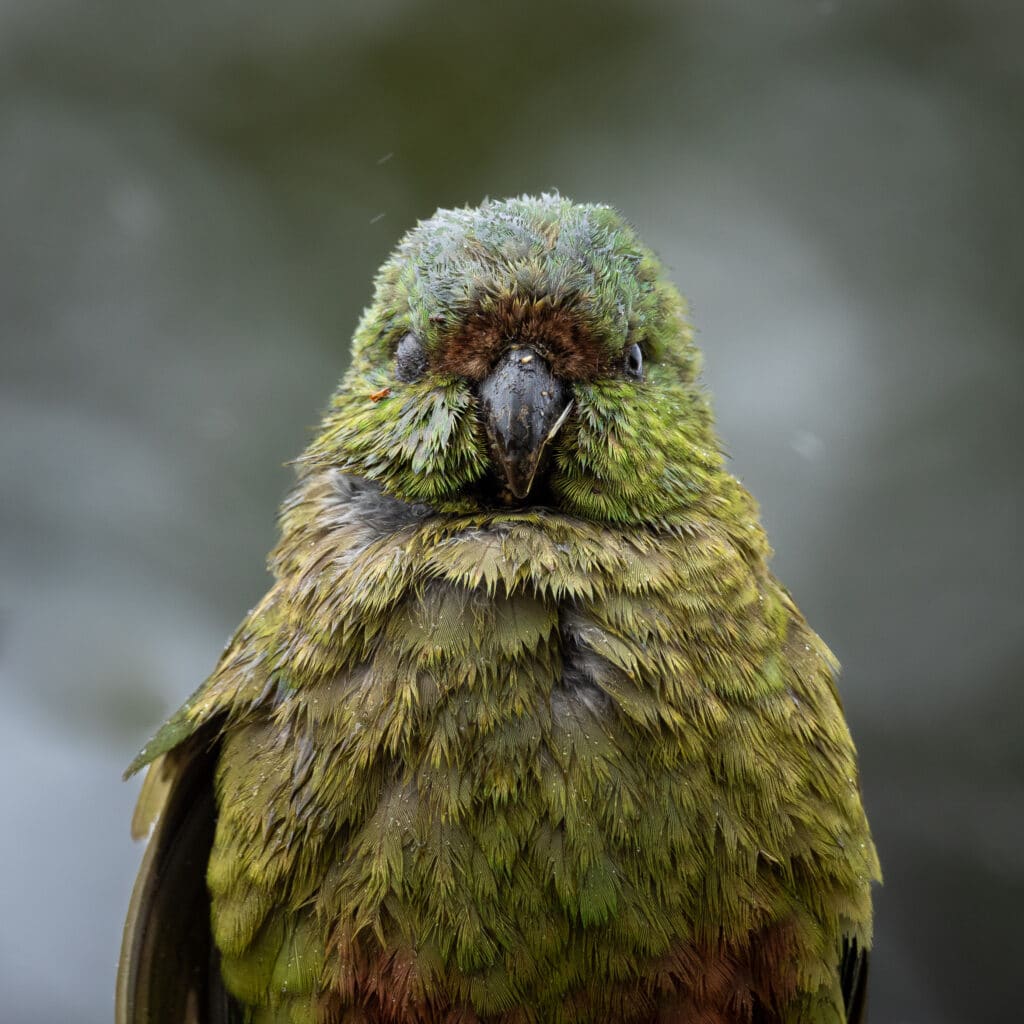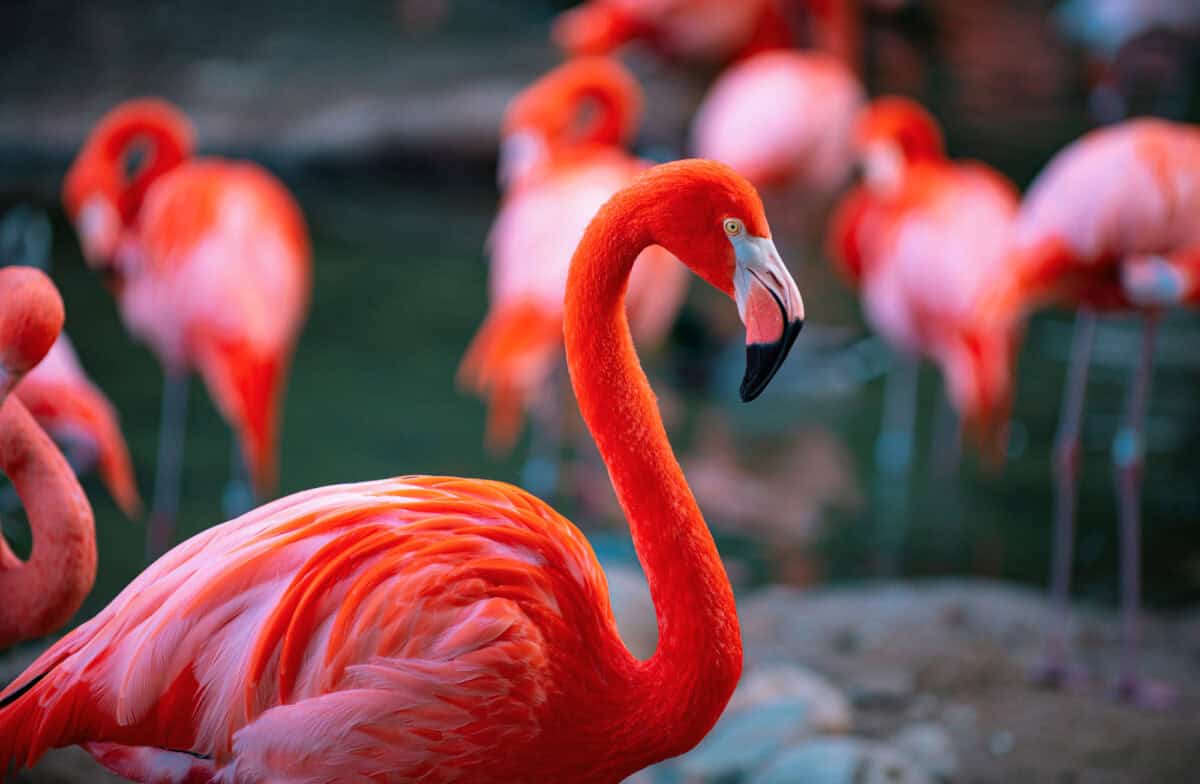Welcome to this delightful exploration of the Top 10 Dumbest Animals in the world– prepare to be amused and amazed!
Our vast animal kingdom boasts an impressive two million species, each with its own quirks and peculiarities. Some creatures are the Einsteins of the animal world, while others are, well, more inclined to take things slow. And then there are us humans, the charmingly unique blend of both intellect and leisure.
While we humans might occasionally display moments of, let’s say, “less than stellar brilliance,” we’re far from the ranks of the following animals. It’s not that these creatures lack intelligence or cunning compared to their peers; it’s just that their actions and behaviors often leave us scratching our heads in bewilderment, wondering if Mother Nature had a chuckle when designing them.
If you’re itching to know which animals make up the top 10 dumbest animals in the world list, then look no further because you’ve come to the right place!
Jump to any section on the dumbest animals that you are interested in below:
Key Points
| Animal | Quirks and Characteristics | Notable “Dumb” Traits |
|---|---|---|
| Giant Panda | Recognizable black-and-white coat, primarily bamboo diet | Prefers plants over its carnivorous nature, less than romantic, poor parenting record |
| Turkey | Domestic fowl, large birds, not-so-bright tendency | Obsession with rain, strange mating behaviors |
| Jerboa | Desert-dwelling, agile jumpers, excellent hearing | Limited problem-solving skills, lack of stealth in scavenging |
| Ostrich | Flightless, incredibly fast runners, defense mechanism | Faux invisibility tactic, misjudgment of threats |
| Sloth | Arboreal, slow-moving, specialized diet | Excessive sleep, defecation expedition |
| Koala | Eucalyptus leaf diet, marsupials, unique features | Poor problem-solving skills, rampant chlamydia, potential starvation |
| Kakapo | Flightless parrot, nocturnal, poor breeding skills | Freezes in fear, female-repelling mating ritual, endangered status |
| Cane Toad | Invasive species, amphibians, strong and heavy | Overactive mating drive, unusual diet choices |
| Slow Loris | Nocturnal, slow-moving, unique defense strategies | Unpredictable freezing behavior, hiding faces when approached |
| Flamingo | Wading birds, distinctive legs, unusual fishing technique | One-legged resting, baffling fishing habits |
| General Note | Animal intelligence varies, from instinctive to obedient intelligence | Intelligence categories: instinct, adaptable intelligence, obedient intelligence |
| Instinctive intelligence relates to natural survival strategies | Dumb animals may not adapt well to new environments or learn new skills quickly | |
| Truly “dumb” animals may struggle to listen or learn instructions, performing correctly only 25% of the time |
1. Panda Bear

Introducing the giant panda, a rare bear species known scientifically as Ailuropoda melanoleuca or simply the panda.
With its striking black-and-white coat and sturdy build, the giant panda is easily recognizable. It’s sometimes called the ‘giant panda’ to distinguish it from the red panda, a close relative.
These pandas are primarily herbivores, with over 99% of their diet consisting of bamboo shoots and leaves. Occasionally, they may consume grass, wild tubers, or even birds, rodents, or carrion. In captivity, they receive a mix of natural and specially prepared food.
Despite their undeniable charm, pandas aren’t considered the smartest creatures and are among the world’s least intelligent animals. Interestingly, they are carnivores but show a preference for a plant-based diet.
In the realm of romance, pandas don’t excel, as their focus is on survival.
These endearing creatures face the looming threat of extinction, already classified as endangered. They also have a history of struggling to care for their young, with occasional instances of harm by frustrated females. It’s crucial that we take action to protect their future.
2. Turkey

Industrial farming has made domestic turkeys an affordable source of meat, given their high meat production. Consequently, they are widely popular in temperate regions worldwide.
Young domestic turkeys are referred to as poults or turkeylings, with females called hens. In North America and the United Kingdom, males are known as toms and stags.
Most turkeys raised in the United States are of the domestic feathered variety, though brown-feathered turkeys are also raised. The snood and the wattle are the fleshy appendages on the beak’s top and bottom, respectively.
Interestingly, the English-language name for this species stems from a historical misidentification when an unrelated species, introduced to Europe via Turkey, led to their name.
The term “Gallopovus,” derived from Latin and translating to ‘chicken peacock,’ is another name for turkeys.
Turkeys are not renowned for their intelligence, often earning a spot among the world’s least intelligent animals. They display curious behavior, like staring at the sky, even in the rain, making life challenging for them, given their ranking on the list of the top 10 dumbest animals.
Furthermore, some turkeys suffer from a genetic disorder called tenetic torticollar spasms, causing them to gaze endlessly at the sky. In an unusual reproductive behavior, male turkeys may attempt intercourse with the decapitated heads of female turkeys.
3. Jerboa

This family of desert rats, Dipodidae, is found throughout North Africa and Asia. Most of their habitat is in dry, scorching deserts. When pursued, Jerboas can run up to 15mph (24 km/h). A small owl (Athene noctua) feeds on some Central Asian species.
Jerboas, in general, have good hearing, which they use to stay safe from predators who hunt at night. A jerboa’s average lifespan is six years.
To avoid predators, Jerboas use their bipedal locomotion to jump, skip, and run, all characterized by rapid and unpredictable changes in speed and direction.
The British Amy used jerboa as a mascot for their 7th Armoured Brigade, surprising many people. The creature’s unusual jumping style puts off predators. However, they aren’t particularly adept at concealing or sifting through garbage for food. You might also like to read about the Coolest Animals on this Planet.
4. Ostrich

Ostriches are one of the largest, flightless birds in the world today. Other birds that cannot fly are emus and kiwis. Ostriches are typically found in Africa, roaming in flocks of up to 50 birds. Ostriches can weigh up to 320 lb (145kg). Its tiny wings and sheer weight make flying impossible.
Where they cannot fly, ostriches make up for travel by running. Ostriches can sprint up to 43mph (70km/h) and run at a constant speed of 31 mph (50km/h).
When ostriches cannot outrun their predator, they use their powerful legs to kick at the predator. Despite being on the list of top 10 dumbest animals in the world, ostriches do not stick their heads in the ground to render them ‘invisible’ as popular belief has it.
What does cut them out for this list is that when they are confronted with a threat and cannot run away or kick at their predators, they flop onto the ground with their heads outstretched in front of them.
The grey/pink/peach colouring of their heads and neck blends in with the sand, creating the illusion that their heads are stuck in the ground. The bird however, thinks it is invisible to the threat.
5. Sloths

Sloths are part of the Folivora suborder, a forest-dwelling group of Neotropical arboreal xenarthran. In the tropical jungles of South and Central America, these slow-moving creatures spend much of their time hanging upside down from the branches.
They have a lot in common with anteaters, which are part of the xenarthran order Pilosa and have a common ancestor.
Caused by electrical wires and poachers, Costa Rica has recorded the bulk of sloth deaths in the country. In addition to providing a surprising barrier to human hunters, their claws hold them in position while hanging upside-down in a tree, and they often do not tumble down even if shot from below.
Sloths are being marketed as pets as a result of animal trafficking. They do not, however, make good pets due to their specialized ecosystem.
Few animals are as slow and dumb as sloths. No wonder they have a spot on the top 10 dumbest animals in the world list. In the nearby trees, they spend much of their time sleeping, although they never defecate there. They descend to the ground every week to perform their duties and then ascend again.
6. Koala

The Koala, or sometimes incorrectly called a koala bear, is a forest-dwelling, plant-eating mammal native to Australia. Koalas were misidentified as bears or monkeys by early European immigrants in Australia.
Koalas are still wrongly called ‘koala bears’ by the general public. However, koalas are essentially marsupials, more strongly tied to wombats and kangaroos than koala bears.
Because of its massive head, round, fluffy ears, and spoon-shaped nose, only found on Australia’s eastern and southern coasts, the koala is easy to recognize. Koalas can reach 24 to 33 inches or 60 to 85cm, and weigh between 9 and 33 pounds.
The animal comes in various colors, from silver-gray to dark chocolate brown. Koalas in the north are distinct from those in the south in size and color. There is some debate on whether these populations are distinct subspecies.
Most Koalas’ diet consists of eucalypt leaves, but they can also be found in trees belonging to other genera, such as Acacia, Allocasuarina, Callitris, Leptospermum, and Melaleuca. There are around 600 species of eucalyptus, but the Koala strongly prefers around 30 of these. They prefer species with a high protein and low fiber and lignin content, respectively.
The brain-to-body ratio of a Koala is the smallest among animals. In Australia, you’ll find these adorable creatures. Koalas’ main meal, low-nutrient eucalyptus leaves, requires the development of four stomachs in the animals.
Furthermore, they have no idea about health care. Koalas are thought to be infected with chlamydia in the ninetieth percentile. They may even starve to death if they cannot identify their food earning themselves a spot on the top 10 dumbest animals in the world list.
You might also like Best Wildlife Encounters, 10 Strongest Animals or 10 Cave Animals.
7. Kakapo

Huge, flightless, nocturnal, and ground-dwelling, the Kakapo (Strigops habroptilus) is an indigenous New Zealand parrot of the Strigopoidea superfamily.
New Zealand is home to the Kakapo, a parrot owl. Parrots are considered some of the most intelligent animals in the world; the Kakapo, however, is one of the top 10 dumbest animals in the world. It freezes in fear when it spots a predator and does not try to flee. Berries only appear once every four years, when the bird prefers to eat them.
The Kakapo, however, is a poor breeder. To entice females, males clear a mating space and issue a booming cry to lure them. As a result, the female can’t reach the mating region since her cry reverberates so widely, making it nearly impossible. Today, there are just around 150 of them left in the world.
It has a distinctive face disc, a huge grey beak, short legs, large feet, and comparatively short wings and tail.
Among parrots, it is the only flightless parrot, the biggest parrot, nocturnal, herbivorous, noticeably sexually dimorphic in body size, has a low base metabolic rate, and no male parental support, which means it is the only parrot to have a polygynous lek breeding system. A recent study shows it may be one of the world’s oldest birds.
8. Cane toad

Cane toads, Bufo marinus (Rhinella marina), have a poor reputation in Australia because they are strong, heavy-built amphibians. These toads are an invasive species in Australia, decimating the country’s fragile ecosystems and unique biodiversity in the process. Toads are as dumb as they can be, and cane toads are no exception.
A lot of the time, you’ll witness them humping on everything from snakes and lizards to mice and salamanders. As far as they’re concerned, they’ll even hump a runaway female toad. Toads can produce up to 30,000 eggs at once. The cane toad has been used in various commercial and non-commercial contexts, including pest control.
The Embera-Wounaan tribe traditionally ‘milked’ toads in their usual habitat in South America for their venom, which was then used as an arrow poison. The Olmecs may have employed the poisons as entheogens.
In Peru, the toad has been targeted as a food source and is eaten after the skin, and parotoid glands have been carefully removed as this is particularly poisonous. Toad meat, when prepared correctly, is high in omega-3 fatty acids and thus beneficial.
9. Slow loris

Nycticebus, the nocturnal strepsirrhine monkey genus that includes the Slow Lorises, is home to various species of Slow Lorises. From Bangladesh and Northeast India in the west to the Sulu Archipelago in the east, and from Yunnan Province in China in the north to Java in the south, they can be found all over Southeast Asia and its neighbouring regions.
Slow Lorises spend most of the night foraging alone, but little is known about their social structure. During the day, sluggish lorises usually sleep alone, but this happens occasionally. Adults’ home ranges may overlap significantly, and males tend to be greater than females.
In the absence of firsthand research on the genus, primatologist Simon Bearder hypothesised that Slow Loris social behaviour is comparable to that of the Potto, another nocturnal monkey.
To protect themselves from predators, the slow and medium Lorises each have their unique defense system. It’s virtually impossible to tell they’re there because their slow, deliberate movement barely disturbs the foliage. It’s a matter of seconds before they stop moving, and they don’t move at all after that.
Slow lorises are known as ‘malu malu’, or ‘shy one’, in Indonesia because they freeze and hide their faces when approached.
10. Flamingo

Wading birds in the family Phoenicopteridae, includes Flamingos.
North America and the Caribbean are home to four species of flamingos, while Africa and Asia boast the greater and lesser flamingos. There’s something undeniably endearing about these elegant birds.
Flamingos, despite having two legs, seem to have a preference for using just one most of the time. They typically rest on one leg, which may seem somewhat foolish when you consider their quirky fishing technique. Flamingos have a peculiar habit of attempting to catch fish with their beaks flipped upside down in the water.
The reason behind this fishing technique remains a mystery, but it’s a behavior that has contributed to their classification among the top 10 least intelligent animals in the world.
Flamingos hold a special place in the hearts of Bahamians, often serving as a beloved subject in their art and culture.
The national bird of the Bahamas is the Flamingo. It was thought that the Flamingo’s fat might treat tuberculosis in the Andes. Flamingo lawn ornaments are popular in the United States.
How to know if the animal is dumb or intelligent

Animal intelligence is frequently extolled. Dolphins are more intelligent than most humans. Using sign language, Koko the Gorilla could tell you how much she loved you. The problem is that we’re just like animals. In every group, there is at least one person who appears to be simply plain dumb.
However, this is always the case for animals. Because they have a brain doesn’t imply that they have mental agility.
The three categories of intelligence experts look for when trying to decide what defines an animal’s intelligence are: instinct, adaptable intelligence, and obedient intelligence.
Natural survival strategies are considered when assessing an animal’s instinctive intelligence. Herding, hunting, retrieving, or any other sort of labor are all examples of domesticated habits that an animal may have.
Adaptive intelligence refers to an animal’s ability to adjust to new surroundings and learn new tasks or habits independently and how rapidly they can learn new skills.
Obedience involves an animal’s ability to solve problems on its own. This intelligence determines the ease with which various animals may be trained and the frequency with which the animals remember the training.
The more intelligent an animal becomes, the more it can correctly perform what it has been taught. A truly dumb animal is only prepared to listen to or learn instructions about 25% of the time.
Summary of Top 10 Dumbest Animals in the World
However, animals are adapted to live in the wild and not be taught human-like intelligence skills by humans. Instead, their intelligence is defined by the combination of skills and abilities that allow the specific animals to live and thrive in their specific environment.
Unfortunately, the animals on this list of the top 10 dumbest animals in the world are not particularly clever at surviving in their environments.
If you enjoyed reading about the animals above, check out Icelandic horses typing emails, the top 10 weirdest animals and the top 10 coolest-looking animals in the world next!
Frequently Asked Questions (FAQ)
Simpler organisms, like sponges or jellyfish, have the least intelligence, as they lack a central nervous system and a brain. However, they are still remarkably well-adapted to their environments.
Sloths are often perceived as “dumb” because of their slow movements and lifestyle. However, this is a misconception. Sloths are slow because their diet of leaves provides little energy, which makes rapid movement unaffordable for them. Their slowness is actually a successful survival strategy, not a sign of low intelligence.
While koalas are often cited as having low intelligence due to their small brain-to-body size ratio, it is important to remember that intelligence varies greatly among species and that brain size is not the only indicator of intelligence. Koalas have evolved to be well-adapted to their eucalyptus-leaf diet and tree-dwelling lifestyle, which doesn’t require a large brain.
The concept of IQ (intelligence quotient) is designed for humans and doesn’t translate well to animals. Animals don’t have a measurable IQ in the same way humans do, as the tests we use to measure intelligence are human-centric. It’s more meaningful to study animal intelligence by observing behavior and problem-solving abilities in contexts relevant to the animal’s lifestyle and environment.
Many animals are known for their high intelligence. This includes certain species of birds like crows and parrots, as well as mammals like dolphins, elephants, and certain primates, especially chimpanzees. These animals show advanced problem-solving skills, social structures, and in some cases, the ability to use tools.
Join our Forum for free today!

- These are The 5 Largest Great White Sharks Ever Recorded - July 19, 2024
- The Surprising Benefits of Big Game Hunting - July 18, 2024
- $100k+ Hunting Experiences The Most Expensive Animals to Pursue - July 17, 2024


